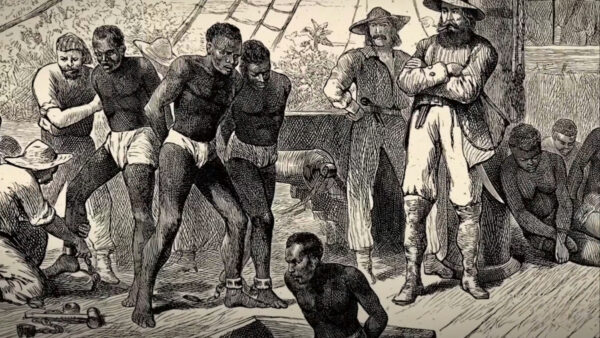The owner of the long-running UK newspaper The Guardian is apologizing for the publication’s role in the transatlantic slave trade. The outlet has also announced a ten-year plan of “restorative justice.”
The Scott Trust announced on March 28 that it was investing £10 million ($12.3 million) in the communities of descendants linked to the newspaper’s founders in the 19th century as a form of reparations. The outlet also announced the ongoing journalism series Cotton Capital, which explores the history of the trans-Atlantic slave trade.

The Guardian was founded by cotton merchant and journalist John Edward Taylor in 1821.
“The Scott Trust is deeply sorry for the role John Edward Taylor and his backers played in the cotton trade,” read the statement.
“We recognise that apologising and sharing these facts transparently is only the first step in addressing the Guardian’s historical links to slavery. In response to the findings, the Scott Trust is committing to fund a restorative justice programme over the next decade, which will be designed and carried out in consultation with local and national communities in the US, Jamaica, the UK and elsewhere, centered on long-term initiatives and meaningful impact.”
The announcement comes after a 2020 independent academic research was commissioned to investigate any historical connections between Taylor and slavery.
The Scott Trust Legacies of Enslavement report found that nine of Taylor’s financial backers for the newspaper had ties to slavery through the textile industry. Taylor also had several ties to slavery through his partnerships with Oakden & Taylor and Shuttleworth, Taylor & Co, two cotton manufacturing businesses.
Shuttleworth, Taylor & Co imported large amounts of raw cotton from enslaved people in the United States and South America. The research team found an invoice book that detailed Taylor’s ties to several plantations in Georgia and South Carolina with the names of the plantation owners.
One of Taylor’s financiers was West India merchant Sir George Philips, who owned part of a sugar plantation in Hanover, Jamaica. In 1834, British slave owners were compensated to the tune of 20 million pounds after slavery was abolished.
The outlet was able to identify several enslaved people connected to the outlet while conducting the research. In 1862, the U.S. Spanish Wells plantation enslaved 90-year-old Toby, 50-year-old Clarinda, 36-year-old Billy and Nancy, who was seven.
In 1817, the Success plantation in Jamaica enslaved a 50-year-old blind man named Archy Gordon, 25-year-old James Maxfield and his mother, 60-year-old Ann Mowatt.
The Guardian announced that the outlet was expanding reporting on Black communities not only in the United Kingdom but also in the Caribbean, the United States, South America and Africa.
The outlet said it will also hire 12 new journalists and create an editorial format to serve Black audiences. The Scott Trust will also provide funding for a global fellowship program for Black journalists.
Historian and contributor to The Guardian David Olusoga says that the reality is that no compensation could ever pay the debt of slavery, but that it was important to try regardless.
“We’re going to do our best as an organization to engage in forms of restorative justice but it can’t by its very nature, given the scale and the horror of the crime, it will never be enough,” said Olusoga. “That means that we have an unpayable debt. But, we do want to be a part of a moment and a movement of organizations trying, trying to engage with this history and believing in the restorative justice movement.”


